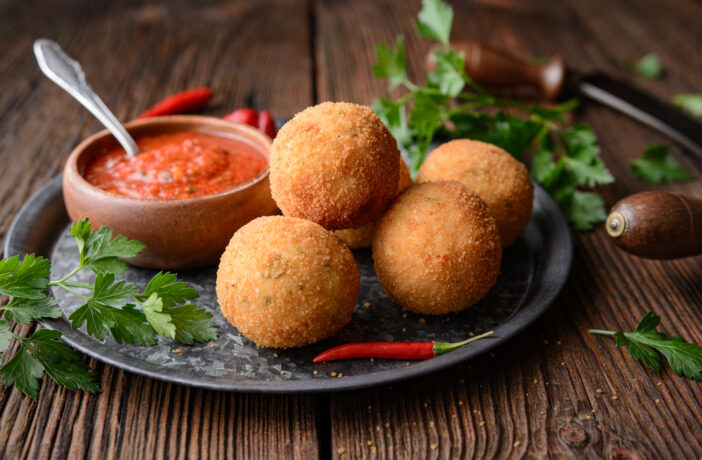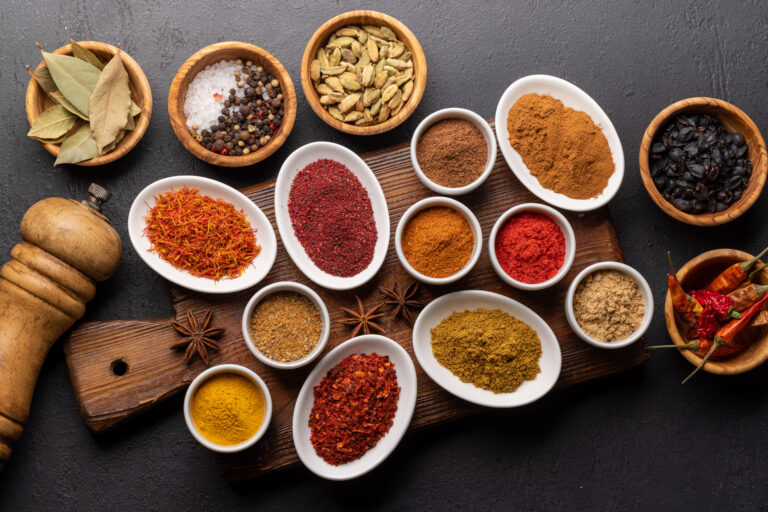7 Regional Italian Cuisine Highlights to Savor Authentic Flavors
Regional Italian cooking styles showcase diverse flavors and traditions, from rich, hearty dishes in the north to vibrant seafood-centric cuisine in the south.

Italy’s culinary landscape is as diverse as its geography, with each region offering unique flavors and traditions. From the rich, hearty dishes of the north to the vibrant, seafood-centric cuisine of the south, regional Italian cooking styles provide a delicious journey through the heart of Italy.
Disclosure: As an Amazon Associate, this site earns from qualifying purchases. Thank you!
Exploring Northern Italian Cuisine

Northern Italian cuisine embodies rich, hearty, and comforting flavors, influenced by its cooler climate and mountainous terrain.
The Staples of Piedmont and Lombardy
Beef and dairy dominate the culinary landscape. Piedmont is known for its luxurious white truffles and robust wines like Barolo. Try a plate of Bagna Cauda, a warm dip made from garlic and anchovies.
Rice and corn define Lombardy. Milan boasts its creamy Risotto alla Milanese, while Bergamo’s Polenta Taragna uses buckwheat flour and local cheeses. Sample these dishes to taste the region’s rustic charm.
Venetian Specialties and Techniques
Seafood shines in Venice. Expect dishes like Sarde in Saor, sweet-and-sour sardines marinated with onions, pine nuts, and raisins. Another classic is Risi e Bisi, a creamy rice and pea dish.
Techniques like marination and slow cooking are key. Venetian chefs excel at creating depth of flavor with minimal ingredients. Discover the simplicity and elegance in every bite, reflecting the city’s storied past.
Delving into Central Italian Cooking Styles
The Heart of Tuscany: Olive Oils and Grilled Meats

Tuscany is famous for its high-quality olive oils and simple, hearty dishes. You’ll find Bistecca alla Fiorentina, a thick, juicy T-bone steak grilled to perfection. Locals often pair this with a glass of robust Chianti wine. Additionally, dishes like Ribollita, a bread and vegetable soup, showcase the region’s rustic cuisine.
Roman Culinary Traditions: From Pastas to Pizzas
Roman cuisine is a celebration of bold flavors and traditional recipes. You’ll love Carbonara, made with eggs, Pecorino Romano, pancetta, and black pepper. Try Cacio e Pepe, another pasta dish featuring just cheese and pepper. Don’t miss Roman-style pizza, characterized by a thin, crispy crust and minimalistic toppings, often enjoyed in local pizzerias and bakeries.
Unveiling Southern Italian Dishes

Discover the bold and zesty flavors of Southern Italy, where culinary traditions burst with vibrant colors and rich taste.
The Vibrant Flavors of Naples
- Naples is the birthplace of pizza. Think thin crust, tangy tomato sauce, and fresh mozzarella. Margherita is the star here.
- You can’t miss Pasta alla Genovese. It’s a slow-cooked, onion-rich sauce that perfectly coats the pasta.
- For seafood lovers, the city’s coastal location means fresh catch daily. Try Spaghetti alle Vongole with clams and white wine.
Sicilian Cooking: A Melting Pot of Cultures
- Sicilian cuisine mixes Arab, Greek, and Spanish influences. Arancini, golden-fried rice balls, are a must-try.
- Caponata, an eggplant dish, fuses sweet and sour flavors. It’s packed with capers, olives, and raisins.
- Bite into Cannoli, crispy pastry tubes filled with sweet ricotta, often dotted with chocolate or candied fruit.
- Sicilian street food like Sfincione, a thick, focaccia-like pizza, offers another delicious twist.
The Unique Island Styles

Sardinian Dietary Staples
Sardinia’s cuisine revolves around simple, high-quality ingredients. Sheep’s milk cheese, like Pecorino Sardo, takes center stage. You’ll also find pane carasau, a thin, crispy bread, often used in soups. Meat lovers will enjoy porceddu, a traditional roast suckling pig. Don’t miss out on fregola, a toasted pasta similar to couscous, often paired with seafood.
Culinary Highlights of the Aeolian Islands
The Aeolian Islands boast seafood-centric dishes thanks to their coastal location. Catch of the day, usually tuna or swordfish, features prominently. Capers, grown locally, add a distinct flavor to many recipes like insalata eoliana. You’ll savor pasta alla eoliana, combining tomatoes, olives, and capers, highlighting the island’s unique ingredients. Don’t skip malvasia wine, a sweet local variety, perfect for pairing with dessert.
Signature Ingredients in Regional Italian Cooking

Italian cooking is defined by its regional diversity. Each area uses distinct ingredients that bring their cuisines to life.
North: Butter, Rice, and Polenta
Butter is a staple in Northern Italian dishes like risotto and polenta. Lombardy’s Risotto alla Milanese uses butter for its creamy texture. Piemonte’s cuisine often includes white truffle butter. Polenta, made from cornmeal, is a versatile side or main dish, often paired with hearty stews.
Central: Tomatoes, Beans, and Pork
Tomatoes are essential in Central Italy. Tuscan Pappa al Pomodoro is a prime example of their use. Beans, especially cannellini, feature in soups like Ribollita. Pork, particularly in Tuscany and Umbria, is celebrated in dishes like porchetta and pancetta-laden pasta.
South and Islands: Seafood, Citrus, and Almonds
Seafood defines Southern and island kitchens. Naples’ Spaghetti alle Vongole showcases fresh clams. Sicily’s citrus fruits, such as lemons and oranges, enhance dishes like Insalata di Arance. Almonds are pivotal in Sicilian sweets like almond biscuits and granita.
Cooking Techniques Across Different Regions

Italian cooking varies widely across the country’s regions, from the hearty, buttery dishes of the North to the fresh, seafood-rich fare of the South.
Northern Techniques: Braising and Butter-Based Sauces
Braising, a slow-cooking method, is common in Northern Italy, especially for meats. You’ll often find beef and veal simmered with vegetables and wine. Butter-based sauces elevate pasta and risotto dishes, adding a richness that’s characteristic of this region’s cuisine. Examples include dishes like braised ossobuco and creamy risotto alla Milanese.
Central Techniques: Wood-firing and Roasting
Central Italy’s cuisine relies on wood-firing and roasting. Pizza al taglio and roasted meats dominate the food scene here. Wood-fired ovens imbue pizzas with a smoky flavor, while roasting brings out the best in pork and game meats. Think of dishes like porchetta, where whole pigs are seasoned and roasted to perfection.
Southern Techniques: Frying and Fresh Seafood Preparation
Frying is a staple in Southern Italy. You’ll find many fish and vegetable dishes prepared this way, such as fritto misto. Fresh seafood preparation is also crucial. Techniques like grilling and marinating bring out the natural flavors of the catches from the Mediterranean Sea. Dishes like grilled swordfish and marinated anchovies are must-tries.
Popular Regional Italian Recipes to Try at Home

Explore these iconic recipes from Italy’s diverse regions to elevate your home cooking.
Northern Italy: Osso Buco
Osso Buco, a classic from Lombardy, involves braising veal shanks. Simmer the meat slowly with white wine, broth, and vegetables. The result is tender veal infused with rich flavors. Serve with gremolata and risotto for an authentic touch.
Central Italy: Florentine Steak
Florentine Steak, or Bistecca alla Fiorentina, hails from Tuscany. Season a thick T-bone steak simply with salt and pepper. Grill on high heat to achieve a rare, juicy interior. Pair with cannellini beans and a drizzle of olive oil to capture the essence of Florence.
Southern Italy: Pasta alla Norma
Pasta alla Norma, a Sicilian favorite, combines eggplant, tomatoes, and ricotta salata. Fry diced eggplant until golden, then blend with a robust tomato sauce. Toss with pasta and top with grated ricotta for a hearty, flavorful dish.
Frequently Asked Questions
What is Osso Buco?
Osso Buco is a traditional Lombard dish from Northern Italy made of braised veal shanks, cooked with white wine, broth, and vegetables. It is typically served with gremolata and risotto.
How do you prepare Florentine Steak?
Florentine Steak is simply seasoned with salt, pepper, and olive oil and grilled over high heat to achieve a perfect sear. It is traditionally served with a side of cannellini beans and a drizzle of olive oil.
What ingredients are used in Pasta alla Norma?
Pasta alla Norma is a Sicilian dish that combines eggplant, tomatoes, and ricotta salata cheese with pasta. Fresh basil and garlic often enhance its rich flavors.
Can I substitute ingredients in these recipes?
While substitutions can be made, the traditional flavors and authenticity of the dishes may be altered. For best results, it’s recommended to use the original ingredients specified in the recipes.
Are these recipes difficult to make at home?
These recipes are relatively straightforward and suitable for home cooking. They showcase traditional techniques and ingredients that are widely accessible, making them both approachable and rewarding for home cooks.
What sides go well with these Italian dishes?
Common sides include risotto or polenta for Osso Buco, cannellini beans or roasted vegetables for Florentine Steak, and a fresh green salad or garlic bread for Pasta alla Norma. These sides complement and enhance the flavors of the main dishes.
Where can I find authentic ingredients for these recipes?
Authentic ingredients can be found at Italian specialty stores, well-stocked grocery stores, or online. Fresh, high-quality ingredients are key to achieving the best flavors in these regional dishes.
How can I ensure my veal shanks for Osso Buco are tender?
Cook the veal shanks low and slow, making sure they braise in enough liquid (white wine and broth) until they are fork-tender. This process usually takes a few hours, ensuring the meat becomes tender and flavorful.
What is the key to grilling a perfect Florentine Steak?
The key is to start with a high-quality cut of meat, season it simply, and grill it over high heat to achieve a perfect sear. Letting the steak rest before slicing ensures it stays juicy.
Is Pasta alla Norma vegetarian?
Yes, Pasta alla Norma is typically a vegetarian dish. It features eggplant and tomatoes as the main ingredients, with ricotta salata adding a tangy, salty flavor.






